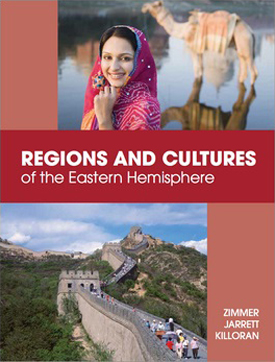The Gold Standard In Test Preparation
REGIONS AND CULTURES OF THE EASTERN HEMISPHERE
SKU: 259RN
Price: $15.95
Regions and Cultures of the Eastern Hemisphere consists of a series of carefully-constructed activities that are fully aligned to Ohio’s new sixth-grade social studies standards. Your students will delight in conducting the exciting hands-on activities in this book. Without their realizing it, you will also be preparing them for the new sixth-grade social studies assessment.
Geography. Students learn to use latitude and longitude to identify relative and absolute locations on maps, and get a chance to act as amateur cartographers by gathering and reporting spatial information about a mystery location in Asia. Students next explore how where we live influences how we live. Students further create their own generalizations on how political, environmental, social and economic factors influence products and ideas. Finally, students create outlines in the continuing effects of the world’s great religions.
History. Students interpret and create multiple-tier timelines on events in the Eastern Hemisphere. They learn about the four earliest river valley civilizations, including their governments, economic systems, social structures, religions, technologies, and agricultural practices and products.
Government. Students learn how looking at an event from different perspectives helps us to gain greater insight into that event. They also identify and classify the major types of governments that have existed in the past or today. Finally, students look at the liberties and responsibilities of citizenship.
Economics. Students examine how economists evaluate sets of economic data and make comparisons. They are given an opportunity to act as the Prime Minister of Nepal, an Asian country, and evaluate choices having both present and future consequences. Students explore the three basic economic questions and consider how to start their own businesses. Students look at specialization and see how it leads to international trade. Students further examine how the interaction of supply and demand determines prices in a market economy. Lastly, students learn how to go about comparison shopping and use an online shopping engine to compare prices.


































